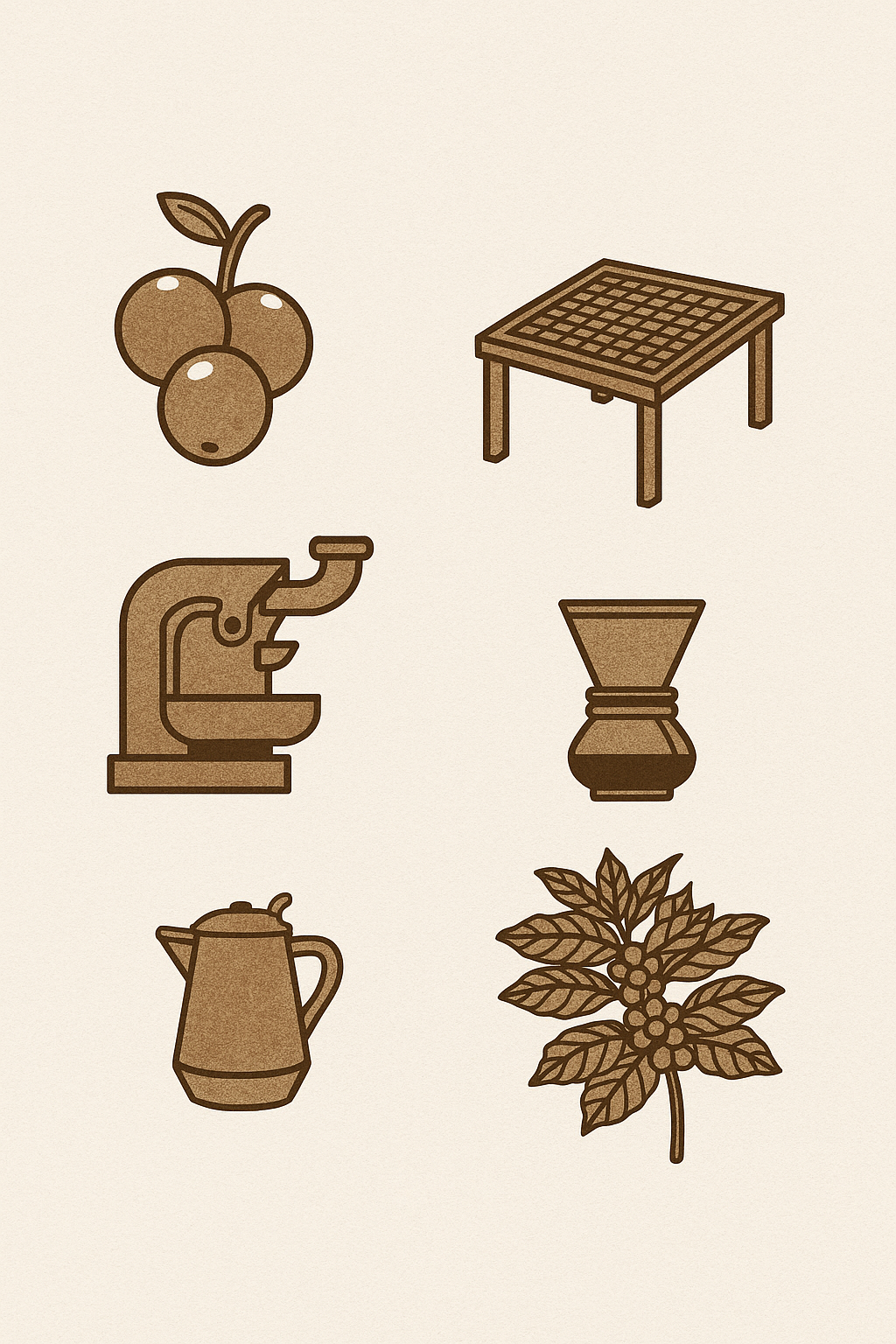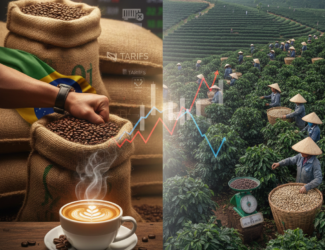
Sweetness in Coffee: From the Cherry to the Cup
Dubai – Qahwa World
When coffee lovers describe their perfect cup, sweetness is almost always part of the conversation. It is the quality that balances acidity and bitterness, lending harmony and depth to the drink. But sweetness in coffee is not a coincidence—it is the result of a long chain of factors that begins in the orchard and continues through processing, roasting, and brewing before it finally reaches the cup.
The Beginning: The Coffee Cherry
Coffee is not truly a “bean” but a seed that grows inside a fruit known as the coffee cherry. As the cherry ripens, it naturally develops sugars such as glucose and fructose. These sugars form the foundation of sweetness in coffee, but whether they survive to the final brew depends on how carefully they are protected and enhanced at every stage of the journey.
Processing Methods and Their Role
After harvest, the way coffee is processed has a profound impact on how much of this sweetness makes it into the cup.
Natural (Dry) Process: Beans are dried inside the fruit, absorbing sugars and developing pronounced fruity and sweet notes.
Honey Process: Some of the fruit’s mucilage is left on the beans during drying, creating a balance of sweetness and clarity.
Washed Process: All fruit layers are removed before drying, producing a cleaner and more transparent taste, though usually less sweet than natural or honey methods.
The choice of processing is not merely a technical decision; it is also a cultural and economic one. Farmers and producers select methods that align with tradition, climate, and the preferences of their target markets, shaping the final flavor profile and the level of sweetness in the cup.
Roasting: Where Sugars Caramelize
Once dried, coffee enters the roaster, where natural sugars undergo caramelization. Under the watchful eye of a skilled roaster, these sugars transform into flavors reminiscent of caramel, honey, or chocolate. Proper roasting preserves and highlights sweetness, while excessive heat risks burning away delicate sugars. In many ways, the roaster serves as the final guardian of the bean’s innate sweetness.
Brewing: The Fine Line of Extraction
Even the best beans and the most careful roast can be undone at the brewing stage. Extraction is everything. A balanced brew draws out natural sweetness and harmony, while over-extraction produces bitterness and under-extraction leaves the cup sour and thin. Brewing requires an understanding of variables such as coffee-to-water ratio, temperature, and time—each of which plays a role in whether sweetness shines through or disappears.
Terroir and Variety: The Signature of Nature
Beyond human intervention, nature herself determines much of coffee’s sweetness. Terroir—the combination of soil, altitude, and climate—alongside genetic variety shapes unique sugar profiles.
Ethiopian coffees are often prized for their berry-like sweetness and vibrant fruit notes.
Coffees from Central America tend to lean toward flavors of chocolate and caramel.
Historic Yemeni coffees frequently display a layered complexity of dried fruits and spice, offering a sweetness unlike any other origin.
Each region, each variety, and even each harvest reflects a unique balance of sugars, reminding us that sweetness is as much a story of geography as it is of craftsmanship.
Sweetness as a Symphony of Nature and Craft
Ultimately, sweetness in coffee cannot be traced to a single stage. It is the sum of many factors: the sugars formed in the cherry, the processing choices made on the farm, the precision of the roast, the care of the brew, and the natural imprint of terroir and variety.
Sweetness in coffee is never accidental. It is crafted and carried forward through the hands of farmers, roasters, and baristas—all working in harmony with what nature provides. And when all of these elements align, the result is a cup that delights with balance, depth, and a touch of natural sweetness that turns every sip into a moment worth savoring.



